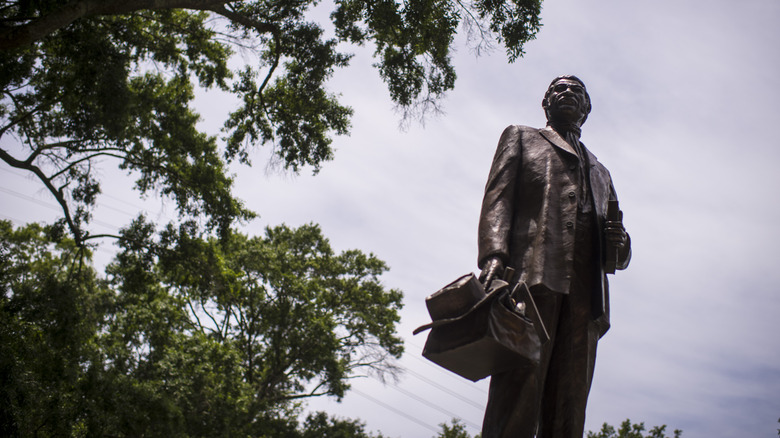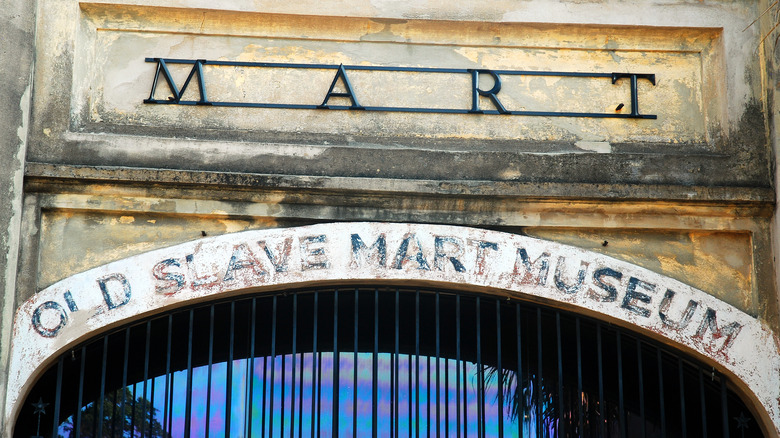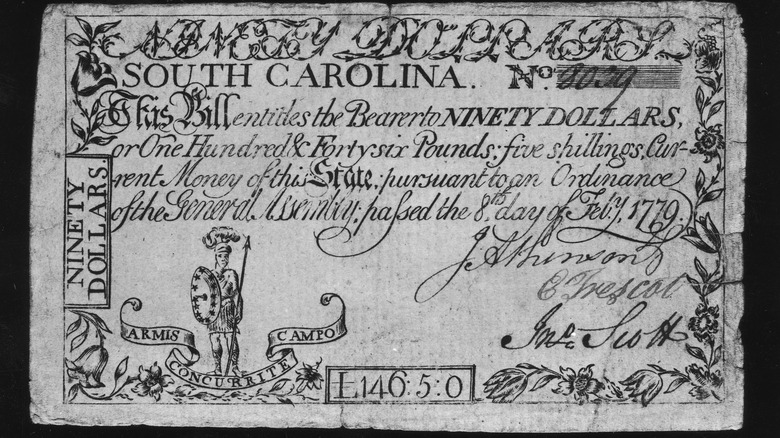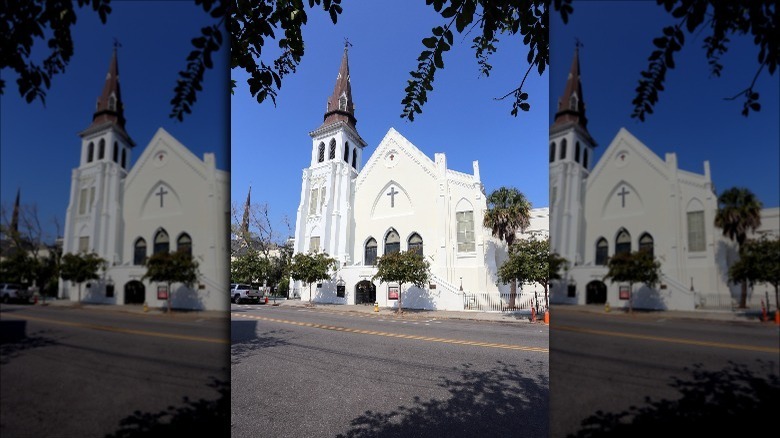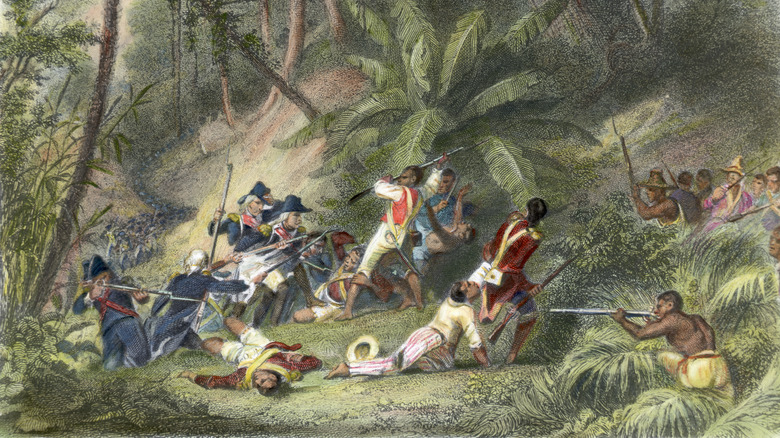The Sad Story Of The Lottery-Winning Slave Who Couldn't Buy His Family's Freedom
A century and a half after ending slavery in this country, we're still coming to terms with the immense moral damage the institution did to our society. It's difficult to conceive of a world where owning another human being was common, but slavery wasn't just legal — it was a complex and well-developed system. There were a surprising list of laws and rules governing not just how slaves were purchased and managed, but the limits of their behavior — and the ways they could bargain for freedom.
It was very difficult for slaves to gain their freedom. For one thing, they were largely prevented from earning any significant money on their own, making the purchase of their freedom almost impossible. For another, the Southern states passed laws that made it a complex and challenging process for anyone, let alone someone denied the fundamental rights of human beings. As a result, most slaves seeking their freedom had to rely on the kindness of their owners — or an incredible burst of good luck.
But even when that good luck arrived, it wasn't always a totally happy moment — in fact, it could often be downright tragic. That was the case with a man named Denmark Vesey.
Denmark Vesey was born into slavery
According to Charleston Magazine, Denmark Vesey was born a slave around 1767. The Encyclopedia Britannica tells us he was likely born in St. Thomas, which was part of the Danish West Indies at the time. According to The Atlantic, a Bermuda slaver captain named Joseph Vesey took on a cargo of slaves in 1781, and took a shine to one particularly bright and good-looking kid. Vesey and his crew named the slave Télémaque and kept him as a sort of pet. Captain Vesey sold his pet, but Télémaque — whose name slowly evolved into Denmark — was returned to him as "unsound" because he had epilepsy.
Vesey took his new slave with him on several voyages, and called Charleston, South Carolina, his home. According to the Charleston County Public Library, Vesey had a common-law wife in Charleston named Mary Clodner. Denmark lived as a slave with Vesey and Clodner for the next 16 years. The U.S. National Park Service reports that Vesey fathered three children with two wives during this time as well. Denmark was intelligent and learned several languages in Vesey's service. He was by all accounts a faithful and useful servant — which in turn inspired Vesey and Clodner to give Denmark permission to be hired out to work in other homes and allowed to keep a small portion of his earnings as pocket money.
His freedom cost $600
As noted by the Charleston County Public Library, local lotteries were very popular in post-revolutionary America. Many communities were understandably reluctant to impose taxes on a population that had just waged a bloody war to escape them, so lotteries were seen as a more voluntary way to raise funds.
Denmark Vesey was allowed to work at nearby homes in Charleston and to keep a small amount of his wages. That's likely why he had $6 in his pocket in November 1799 when he purchased a lottery ticket while walking down the streets of Charleston — a ticket that turned out to be a winner, giving Denmark Vesey $1,500.
Vesey immediately negotiated with his owners, Joseph Vesey and Mary Clodner, for his freedom. They accepted $600, and by December, Denmark was a free man. Unfortunately, as noted by PBS, Denmark was unable to secure the freedom of his wife and children. Slave owners were under no obligation to free slaves, even if they were offered compensation. Worse, South Carolina continued to make it increasingly difficult to free a slave. As noted by Time, in 1820 a law was passed requiring slave owners to get permission from the state before freeing a slave. Every passing year made it less likely that Vesey would be able to free his family, even though Charleston Magazine reports that he became a successful carpenter.
He became a church leader
With his freedom and a thriving carpentry business, Denmark Vesey became a leading figure in Charleston's Black community. According to NPR, in 1818 he was one of the co-founders of the Hampstead Church, which broke away from the Methodist Episcopal Church. This was part of a larger movement of Blacks forming their own churches in the South in order to have the freedom to worship as they saw fit. As NPR notes, this is the church that would eventually evolve into the Emanuel African Methodist Episcopal Church, usually referred to as Mother Emanuel.
According to PBS, Vesey quickly became a "class leader" at the church, meaning he preached to small groups at his home, teaching them spiritual lessons. The white community in Charleston was alarmed by the presence of this church, which they called the African Church, and continuously disrupted services and tried to undermine it. This angered Vesey, and his preaching began to be sourced from the Old Testament. He told his followers that they were the New Israelites, people chosen by God to be freed from enslavement and empowered to punish their masters. Soon, Vesey was using the church gatherings to inspire a slave revolt that could have been one of the largest in history.
Denmark Vesey possibly organized a slave revolt
According to the Encyclopedia Britannica, Denmark Vesey was unhappy with his second-class status as a freed slave. Although no longer in bondage, he was not considered an equal to the white citizens around him, and he'd been unable to secure the freedom of his family.
This eventually evolved into a plot to spark a huge slave rebellion. Although Time notes that there is no surviving proof that the revolt was real and not simply the paranoid imaginings of the white population, the details are compelling. NPR reports that Vesey and a fellow member of his church, Peter Poyas, planned to organize and enlist the assistance of about 9,000 slaves in the city. They would reportedly seize guns and ammunition and massacre the white population. The U.S. National Park Service notes that Vesey allegedly modeled the rebellion on the successful slave rebellion in Haiti in 1791, where he purportedly planned to sail with his people after burning Charleston to the ground.
But as reported by The Atlantic, a house slave named Devany heard about the planned revolt and reported it to his master. Per Britannica, Charleston officials arrested 130 Black leaders and executed 35 — including Vesey. They then burned the African Church to the ground for good measure.
